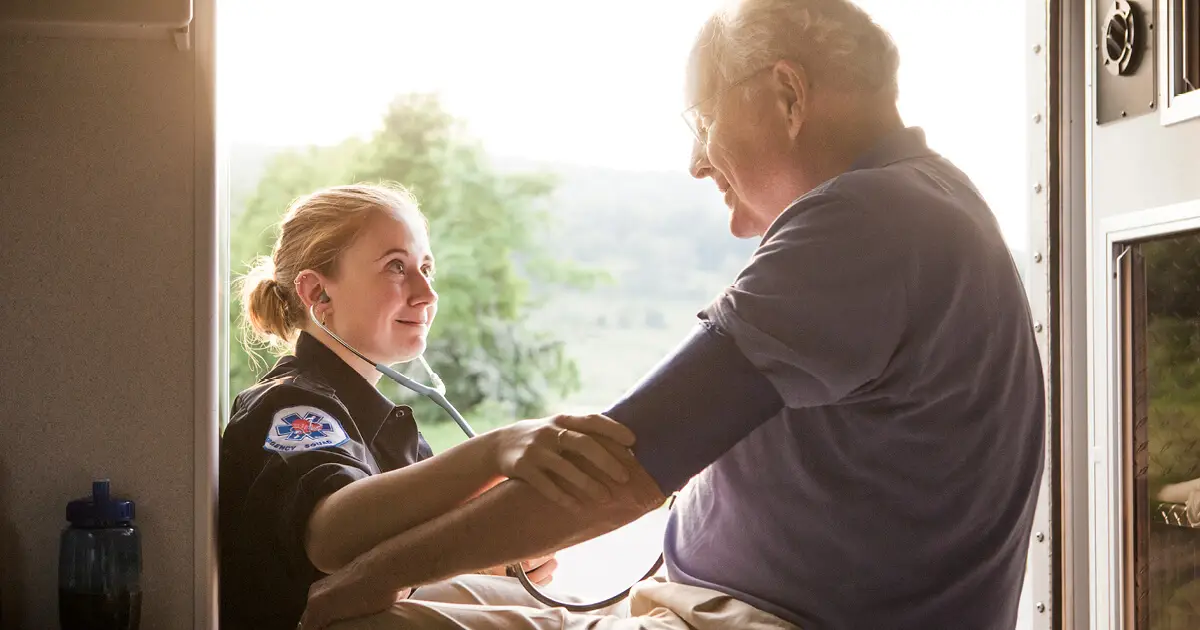The Case for Better Geriatric Patient Care Training for EMTs and Paramedics

EMTs and paramedics always strive to provide the highest level of care on each call, but there's a demographic that's often overlooked when it comes to training EMS professionals: The elderly.
Geriatric patients rely more heavily on emergency medical services than any other demographic. Although Americans over 65 years old make up just 15% of the population, they account for about 40% of all ambulance transports—and that's not going to change any time soon. In fact, it is estimated that by 2030, older adults will comprise about 50% of the EMS call volume nationwide.
With this in mind, it is a great time for EMS instructors to recognize disparities in geriatric patient care and take proactive measures to improve training within their respective departments. Read on to learn why training EMS professionals to provide care for geriatric patients is actually more necessary than ever.
Geriatric Patients and Healthcare Usage
In a 2022 study published in The American Journal of Surgery, researchers report that geriatric patients (specifically, trauma patients) are more likely to experience prolonged prehospital scene time than younger adults. Meanwhile, a 2021 study published in the Scandinavian Journal of Trauma, Resuscitation, and Emergency Medicine reveals similar findings, with the conclusion that "undertriage present[s] a significant challenge, with adverse effects on mortality."
So, why is there this disconnect? For starters, geriatric patients often present much differently than younger generations who use emergency services. They're more likely to have issues like dementia or delirium, both of which can make it more difficult for EMTs and paramedics to assess their immediate needs. Meanwhile, geriatric patients are more likely to have compounding comorbidities and dangerous interactions with medications, all of which emergency responders must work to identify while rendering proper care.
Finally, geriatric patients have a high likelihood of living in an environment where dangerous fall risks are present. Even in a low-energy fall, older patients who are frail or suffer from medical conditions like osteoporosis can suffer from severe injury. EMTs and paramedics are thus faced with the challenge of responding to falls, identifying injuries from falls, and understanding the mechanism of injury from low-energy falls. All of this can be difficult without very specific training that these professionals often don't receive from their respective departments.
How EMTs and Paramedics Can Improve Care
EMS providers can deliver better care to geriatric patients, and there are some proactive steps EMTs and paramedics can start taking immediately to make a notable difference. In an article by Linda Willing, a retired fire officer who works with emergency services agencies on issues of leadership development, EMS departments can set up "informal question-and-answer sessions with local experts such as geriatric social workers, doctors, or home health care providers." This can be a great way for departments to develop relationships with staff at these care facilities while enjoying some valuable insights into how they can best work with geriatric patients.
Meanwhile, EMTs and paramedics can also provide improved care to geriatric patients by being mindful of their own assumptions and biases. As Willing explains, "It may be tempting to treat all older people as if they are of diminished capacity both mentally and physically. This kind of treatment can be perceived as being very disrespectful even if it is not intended in that way."
Choosing the Right Resources as an EMS Instructor
While there are some immediate steps EMTs and paramedics can make to improve geriatric patient care in the field, much of the responsibility here will fall on EMS instructors. More than ever, EMS professionals (and professionals in-training) need access to specific training that empowers them to better serve this demographic.
Public Safety Group’s Geriatric Education for Emergency Medical Services (Third Edition) is an excellent resource for EMS instructors, providing EMS students with the information they need to prepare for the unique challenges and needs of the older patient while empowering them to improve medical outcomes and quality of life. This resource also sets instructors up for a single-day, 8-hour "core" provider course with everything from case-based lectures and live-action video to hands-on skill stations and more.
The GEMS: Geriatric Education for Emergency Medical Services Online Course can be taken independently without the need for a formal course. Instructors can assign it to their students to take independently, or any practitioner can take it on their own. Learners who successfully complete this GEMS online course will receive a certificate, a card recognizing them as a GEMS provider for 4 years, and 8 hours of CAPCE credit, all issued through NAEMT.
If you're an EMS instructor looking to expand geriatric care training within your department, check out Geriatric Education for Emergency Medical Services and other valuable resources from Public Safety Group.
If you need help placing an order or need assistance selecting the right materials for your department, feel free to reach out to our team.
Read More: